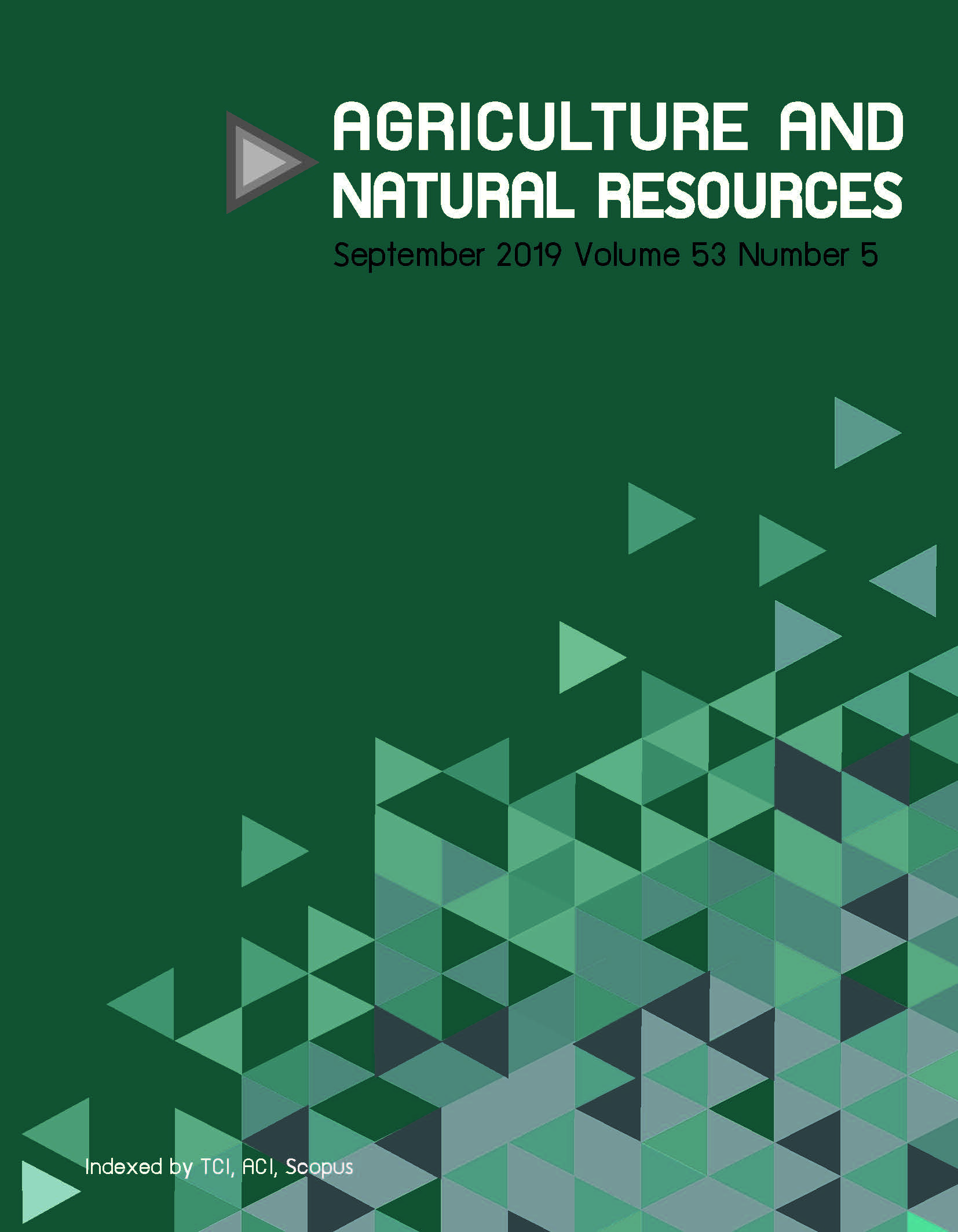Gas chromatography-mass spectrometry analysis and biological activities of hexane extract from Boesenbergia xiphostachya (Gagnep.) Loes. rhizome
Keywords:
Biological activity, Boesenbergia xiphostachya, Cytotoxicity, GC-MS, phenylpropanoidsAbstract
Boesenbergia xiphostachya (Gagnep.) Loes. (Zingiberaceae) has been ethnomedically used in Thailand as a laxative and flatulence remedy. Only a few studies involving the phytochemical screening and anti-oxidant activity have been reported. The present work analyzed the volatile components using gas chromatography-mass spectrometry and investigated the antimalarial activity, neuraminidase inhibitory activity, antimycobacterial activity and antimicrobial activity of the hexane extract. The study was extended to investigate the cytotoxicity effects of the extract on both normal cells and cancer cells. The results indicated that many volatile components were present in the extract including phenylpropanoids (C6−C3 carbon skeleton), phenylpropanoid-related compounds (C6−C2) and benzenoids (C6−C1). The main components detected in the hexane extract were: 3,6-dimethoxy-2-ethylbenzaldehyde (38.43%), elemicin (15.36%), asarone (12.95%), cis-isoelemicin (4.32%), methyleugenol (4.20%), trans-isoelemicin (1.19%) and methylisoeugenol (1.14%). The extract exhibited weak inhibitory activity in all tested assays. Similar activity profiles were also observed in antimycobacterium tuberculosis, antibacterial and antifungal assays. Moreover, the hexane extract of B. xiphostachya showed weak activity against nine cell lines with half maximal inhibitory concentrations higher than 50 μg/mL. The results also showed a significant decrease in LNCaP cell viability at the highest concentration tested (1,000 μg/mL). It should be noted that the investigation of the volatile components, bioactivities and cytotoxicity studies was reported for the first time regarding the B. xiphostachya rhizome. The obtained data might be useful for further studies on other applications of the extract.
Downloads
Published
How to Cite
Issue
Section
License

This work is licensed under a Creative Commons Attribution-NonCommercial-NoDerivatives 4.0 International License.
online 2452-316X print 2468-1458/Copyright © 2022. This is an open access article under the CC BY-NC-ND license (http://creativecommons.org/licenses/by-nc-nd/4.0/),
production and hosting by Kasetsart University of Research and Development Institute on behalf of Kasetsart University.







